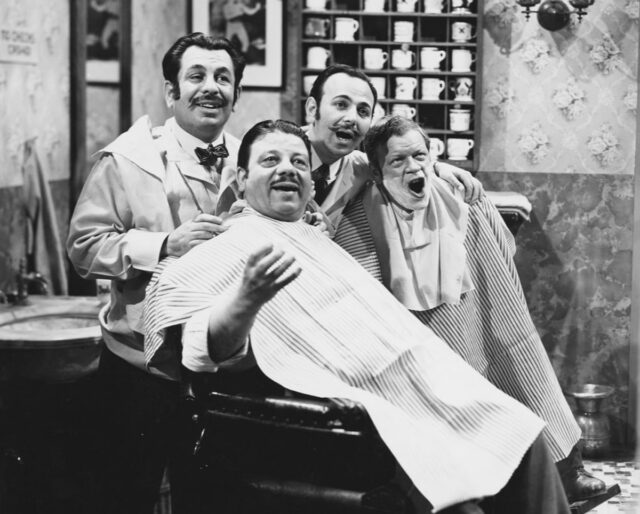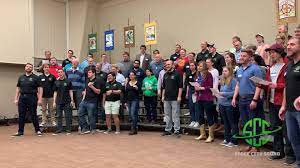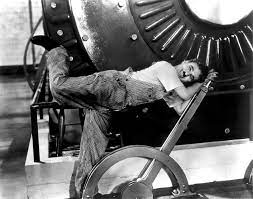
How to Improve Sight-Reading Skills
How to improve sight-reading skills An Introduction to Sight-Reading What exactly is sight-reading? Sight-reading is the ability to look at a sheet music chart and sing it for the first
What exactly is sight-reading? Sight-reading is the ability to look at a sheet music chart and sing it for the first time with no pre-practice. Using the technique of sight-reading to be able to read sheet music well enough to sing a song sight unseen depends on several factors. Those factors are not limited to just the reader’s musical background and formal or informal education. Skill in sight-reading and successfully singing a piece of music includes the singer’s visual, aural, and mental skills as well as some basic music theory. In this article you will learn techniques that you can use to improve sight-reading skills.
It should be noted that sight-reading is considered an advanced skill. If you can’t read sheet music, it isn’t a problem. Many Tidelanders and a lot of barbershop singers in general, do not sight-read music or even read music at all. So, if you can’t read sheet music, it isn’t a problem. We don’t want you, the reader to think that the only way you can fit in and either rehearse with us or ultimately become a Tidelander if you choose to pursue that goal is if you can read sheet music. That isn’t the case at all.
Reading music or having the higher-level ability to sight-read is an enabler to being able to learn music faster and with less effort. It’s like degrees of proficiency. The lack of music reading ability should not and must not be viewed as a barrier to participation with the Tidelanders.
The techniques described in this article can still be used to learn new music without sheet music or being able to read sheet music. If this applies to you, just eliminate the parts where we describe reading or following along with the sheet music. If you do desire to learn more music theory or you want to either learn or improve sight-reading skills, that’s great!
We are the Houston Tidelanders. We are an all men’s a cappella barbershop chorus. Our organization was founded in 1946 when W.H. Anderson was transferred to the Houston area. He decided to start a chapter of the The Society for the Preservation and Encouragement of Barber Shop Quartet Singing in America (SPEBSQSA). Today the SPEBSQSA is known as the Barbershop Harmony Society (BHS). Over 150 men met at the Rice Hotel to learn about plans for the new chapter. By September of that same year, the new chapter had 220 members. You can learn more by reading our origin story.
We learn new music each year that we perform in front of audiences during our shows. The processes described here are what we recommend for all of our members. Many Tidelanders use all, some, or a combination of the techniques and tools described in this article.
An adept sight-reader will have developed these skills and will also have some degree of singing experience. A performer with limited singing experience may not have adequate knowledge of music in general or specific musicianship-related skills. So, if you’re learning how to sing, it’s in your best interest to invest time to Learn Basic Music Theory. If you are not new to singing but you’re unfamiliar with barbershopping, it may be helpful for you to learn The Basics of Barbershop Music. Both of these articles can help you become a more proficient musician. If you are just getting started and you want to learn how to sing, we would encourage you to come to our rehearsals as a guest.
The Tidelanders provide learning tracks (i.e. audio recordings) and sheet music for all of the songs in our repertoire. Each learning track offers a specific part (Tenor, Lead, Baritone, Bass) as well as a mix of all parts. Guests and members are provided access to our sheet music and learning tracks.
If you are attending our rehearsals, stand next to someone that sings your part and listen to them sing it. If you have questions, ask! We also have section leads that can help.
Singers need to be able to keep track of where they are in the music. Barbershop sheet music includes the notes, rhythms, and lyrics for all four parts. Due to that inherent complexity, it’s possible to lose track of where you are in the music if you get distracted. It does take some cognitive load, so you might want to minimize the distractions.
Successfully singing while sight-reading starts with keeping track of where you are and note recognition. It’s useful to understand note values (whole, half, quarter, eighth, sixteenth), rests, rhythms, as well as note pitches. TE Tuner can be used to help understand the proper pitches associated with a given note.
In order to effectively sight-read, you must understand some important musical elements by way of basic music theory. As was previously mentioned, one of the most important skills used in sight-reading is the ability to recognize notes, rests, and rhythms. That also includes understanding musical elements that might impact the rhythm: tempo, beat, fermatas, and time signatures.
Skills related to sight-reading can be improved with practice. You can use sheet music you own (or have a right to use) or by using a resource like SightReadingMastery.com. Naturally, attending Tidelanders rehearsals is a great way to practice and enhance your music skills. Working to get ready for a performance or rehearsals can provide the inspiration needed to achieve our music goals.
Singing requires a set of vocal warm-ups before you stress your vocal cords and related parts of the vocal tract. That can include humming or singing scales or using specific vocal sounds. Make sure to take about 8-10 minutes to do some warm-ups before starting to practice vocalizing your songs. Warm-ups should consist of a couple of minutes of physical stretching. Next, get into a comfortable singer’s position. Follow that with some abdominal breathing exercises to open the air chambers. Lastly, end your warm-ups with easy humming and singing pure vowel sounds up and down throughout your range.
Good posture and alignment is necessary for singing! That means knees over ankles, hips over knees, shoulders slightly back, with the ears over the shoulders. The head should be tilted down slightly.
If you’re a guest that plans on regularly attending Tidelanders rehearsals, we will provide you with access to the sheet music at rehearsal as well as at home.
If you’ve never tried to sing the piece of music before, it is recommended that you listen to the song in some form or fashion until you have some familiarization with the music. Don’t sing and don’t hum; just listen. We typically recommend listening to the song at least three times. Amazon Music and YouTube usually have songs with lyrics. This is a good time to note where the singer is taking or avoiding breaths and where there are tempo changes (speeding up, slowing down, a “stomp”, etc), rhythms, notes, etc. You may want to make mental notes of complex rhythms or where there are large jumps in pitch that could make keeping the rhythm difficult.
Another useful thing to do is to use a mobile app like AudioStretch to slow down the song. AudioStretch is available for either the iOS or Android operating system. You can slow down, speed up, pitch down, pitch up, or loop a song. Once you slow the song down, it’ll be easier to keep up with the song while you’re trying to understand any musical nuances. That understanding will translate into a better singing experience the first few times you sing the new song.
Another useful technique to help you is to sing the song using the specific vowel sound “ahhh”. When you start singing along on a neutral vowel, this is a good time to identify where a phrase is too long for you to sing in one breath and decide where you might attempt to sneak in a breath.
Next, don’t sing the song. Instead play the song three times and “mouth” the words, making no sounds. If you’re learning a song to sing with the Tidelanders, use the music like you did before to follow along as the song plays. We also still recommend touching the page or screen to physically follow the music. Don’t sing too loudly. You want to be able to hear the track, not yourself.
Once you have a good comprehension of the song, start by humming or singing the vocals softly.
If this is a Tidelander song, sing at a quiet volume with all words and notes against your part learning track. Use your finger again to physically follow along with the sheet music. We recommend that you sing with no stress. Use gentle and easy pitches well within your range. Work on getting the words correct. Your vocal production will be too light for any kind of real performance in this step, but that’s okay for now. Just sing quietly enough that the recording is louder than your voice.
Now that you’ve listened to the song and hummed it, you should start trying to sing it at a normal volume as if you’re trying to perform it. This is where you want to sing the words and attempt to sing the correct notes. It’s okay if you make mistakes. Listen for them with an ear to improve. Highlight any spots that keep giving you trouble and focus on improving those. Remember, practice makes permanent. Practicing mistakes makes those mistakes permanent. Perfect practice makes perfect. Incorporate what you’ve learned during these steps into your plans and approach to sight-reading in the future. This is a great opportunity to continue to sing against a slowed version of the song using AudioStretch.
This applies only if you’re learning our songs. Switch earbuds (or change the speaker sides) and sing your part with your normal volume against the other three parts. Yes, your part is missing and you must create the notes all by yourself! Use your finger to physically follow/track along with the sheet music.
You may discover you are singing wrong notes or words during this step. If quartet singing is too difficult, you may have to first sing with the full mix (all four parts are clearly heard). After you are feeling confident, make yourself sing against the trio with your part missing at some point… it reveals all!
Do this at least three or more times. You will most likely have to switch back to earlier steps to re-discover notes and words, because singing against the other three parts with your part missing quickly exposes areas in a song that you might need to improve.
At some point, we would encourage you to record yourself singing and review that recording while following along with the music. Singing can be a very intense activity. It’s difficult to perform and review our performance at the same time. Silently review the music while you listen to your recording. You’ll have a lot more bandwidth to pay attention to the quality of your performance. Highlight any spots that need improvement. Use the recording as a tool to improve your ability to sight-read by noting specific details you missed in your recorded singing performance.
We have a lot of fun and work on specific songs at our rehearsals. Most of the time, we rehearse as a chorus but sometimes we break out into voice part sectionals. If you’re new to our hobby or new to singing, we would welcome you to our rehearsals. You will get the chance to learn or sing some new music. Singing with other people as a guest at our rehearsals is a great way to reinforce learning Tidelander songs when you’re using this technique.
Come sing with us!

How to improve sight-reading skills An Introduction to Sight-Reading What exactly is sight-reading? Sight-reading is the ability to look at a sheet music chart and sing it for the first

Generally in most years, the SWD sponsors an annual Chorus and Quartet competition. The exception is the pandemic year we experienced due to Covid-19. There was no competition during the pandemic. The BHS recent resumed chorus competitions in 2022.

The Tidelanders excitedly sponsored our first singing competition. We promoted the contest to over 200 high schools in Harris and Fort Bend counties in Texas. We announced two winners (Men’s and Women’s) mid-April. We are looking forward to planning a bigger contest next year.

The Houston Tidelanders Chorus is pleased that we were able to perform for Clear Lake audiences once again! We’ve been performing in the Clear Lake area for about 25 years and it’s one of favorite shows.

“Smile” continues to be considered timeless. Meaning the message always seems to be relevant. As long as it continues to be popular, artists will continue to cover and interpret it’s meaning in order to continue to have it resonate with audiences. Modern artists like Michael Jackson have arranged and performed it.